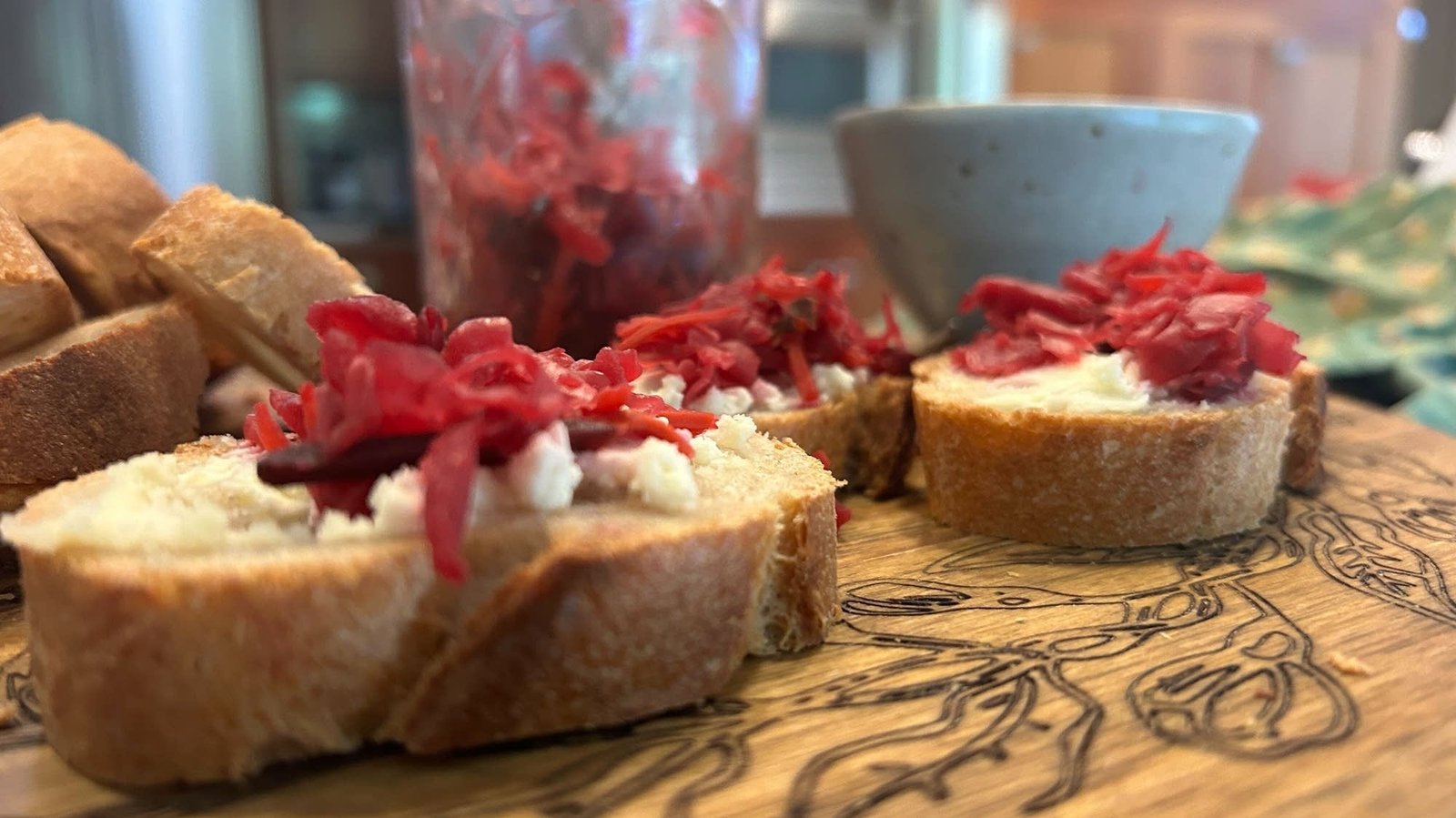Making fermented foods is easier than you may think, Food writer Beth Dooley invited us to her kitchen to talk about the process for making foods such as sauerkraut, kimchi and yogurt. She explained lacto-fermentation and did a step-by-step demonstration of how to make sauerkraut.
For the full conversation, click play on the audio player above.
Recipe: Sauerkraut
-
1 medium green or red cabbage (about 3 pounds)
-
1 medium carrot, shredded
-
1 large red beet, shredded
-
2 tablespoons coarse or Kosher salt
-
1 teaspoon caraway, optional
Directions:
-
Cut the cabbage in half lengthwise and remove the core. Cut each half in half, then slice thinly as for coleslaw. Put the cabbage in a very large bowl along with the shredded carrot and beet.
-
Sprinkle the salt over the vegetables and, with clean hands, begin mixing and massaging it together until the cabbage is very limp and reduced by half. Mix in the caraway seeds if using.
-
Divide the cabbage and the liquid in the bowl among the jars. Use a wooden spoon to pack the cabbage down until the liquid covers the leaves. Press and pack the cabbage down every few hours making sure it’s covered with the liquid. Loosely cover the jars. Once fermentation begins, the volume of the cabbage will increase in the jars. If the cabbage is not fully submerged, top it off with a brine mixture: 1 1/2 teaspoons of kosher salt in 1 cup of water. (The cabbage needs to be fully submerged to ferment properly.)
-
Set the jars at room temperature in a dark spot with the lids on but not screwed down tightly. Let them sit for about five days and up to two weeks.
-
Taste! It should be tangy, briny, crunchy when ready then crew on the lids and refrigerate for up to four months.
Beth’s Notes:
You don’t need tons of cabbages or a big crock to make a good sauerkraut. All it takes is a bit of dicing and time. Making sauerkraut is simple: shredded cabbage is mixed with coarse salt and stored in a ventilated jar. Give it a week for the natural bacteria to convert the cabbages sugars into lactic acid. This gives the kraut its funk and pop.
The longer the kraut ferments, the stronger the flavor will be. Vary the all-cabbage sauerkraut by adding shredded beets, carrots and/or parsnips for color and taste. Delicious with brats, pork and game, it jazzes up sandwiches and flatbreads, and it works beautifully on a cheese tray.




